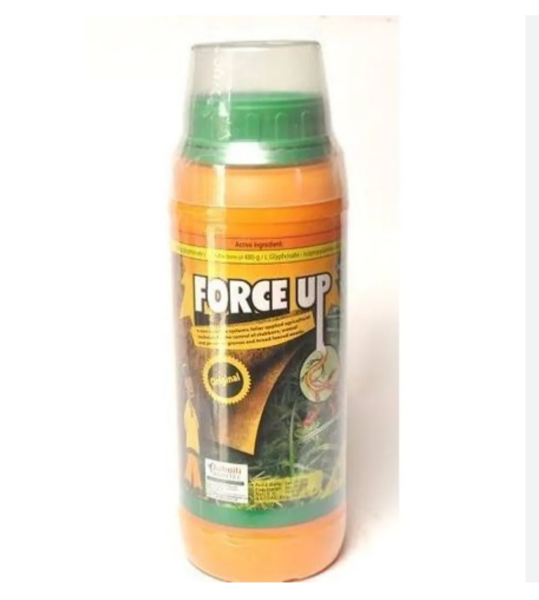
Herbicides are pesticide used to control Weeds. They can be from natural source such as plants extracts or from chemicals. Herbicides are not normally sold as pure active chemicals but formulated into commercial products. These products contain active materials, inert materials like clay, bentonite, carriers, water, solvent and
sulfactants or dispersing agent which help in preventing flocculation and enhance spread
REASON FOR HERBICIDE FORMULATION
1. For uniform Application of small quantity over a large area.
2. To select the herbicide that will function better for a particular crop and not distroy other crops
3. The carrier will help protect the herbicide from adverse environmental conditions and improve it’s shelf life etc
TYPES OF HERBICIDE FORMULATION
1. Dust formulation with the carrier being clay or powder. It is usually applied on wet foliage
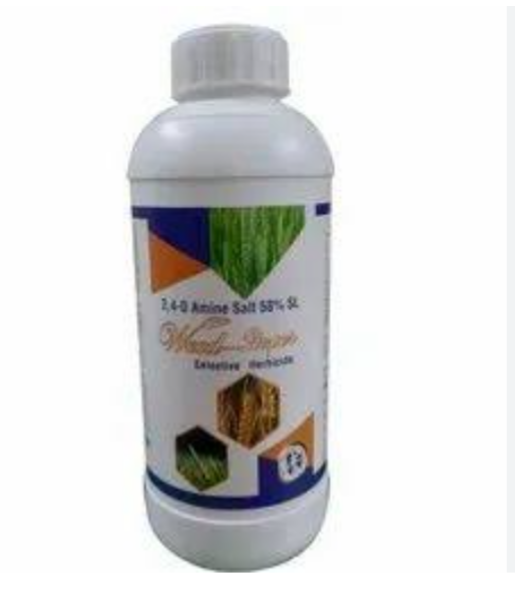
2. Granular formulation with large amount of inert material. It is usually applied by broadcasting. This formulation is of two types
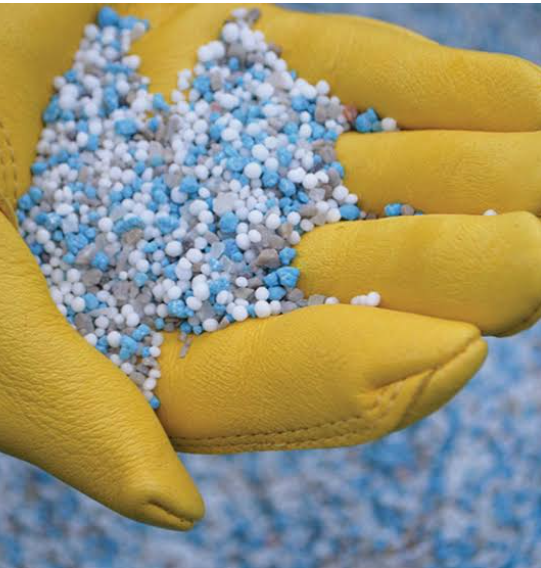
a) Macro granules (0.25mm in diameter) used for aquatic Weeds, trees and bushes
b) Micro granules (75-150 microns in diameter)
3. Pelletized formulation which is larger than granules. It is applied by spot placement.
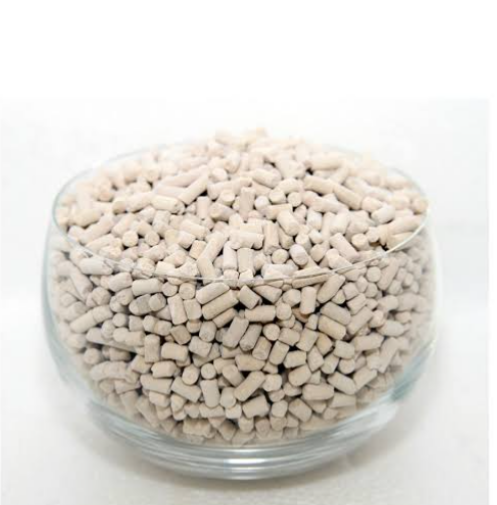
4. Encapsulated or glomular formulation are herbicide produced in capsule form which are suspended in liquid before usage. They are good for aquatic situation
5. Wettable powder. They have low solubility in liquid but can form suspension in water. It is applied by mixing it with little water to form a paste, then slurry and finally a suspension mixed with a calculated amount of water.
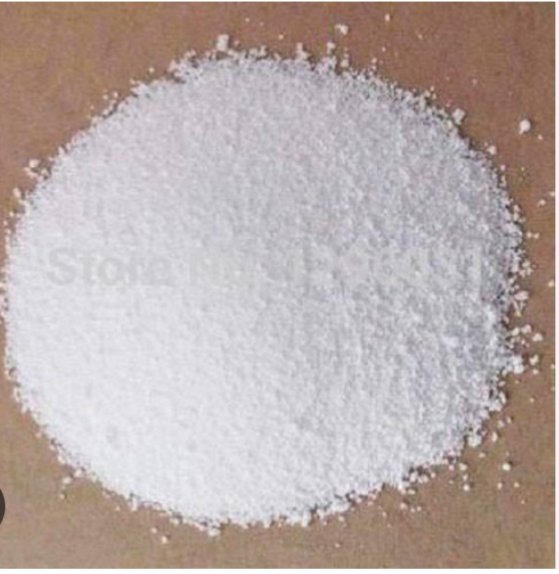
6. Water soluble solid that exist as soluble salts which are dissolved in a calculated amount of water
7. Liquid form.
MEANING OF VALUES ON HERBICIDE PACKAGES
On herbicide packages, some values of informations are write on it for users to take note. Such as
a) 2kg a. i/hac. a. i means active ingredient
b) 500EC means out of 1000ml, only 500 active ingredients are present in the herbicides. That is only 50% a. i are present in the herbicide.
HERBICIDE CLASSIFICATION
Herbicides can be classified based on the following factors:
a) Chemical similarity
b) Time of application
c) Selectivity
d) Physiological response
CHEMICAL SIMILARITY
There are two groups of herbicides under chemical similarity
I) Inorganic herbicides: They are more toxic and less selective. They are also required in large quantity and used for industrial weed control. The difficulty in handling them make them not utilizes nowadays. Example include sulphonic acids, salts like sodium chloride etc
II) Organic herbicides. : They are effective E in weed control therefore, little quantity is require for application. They act through the enzyme system of the plant. They are very common nowadays. Examples include Dalapon,, glyphosate, Antichlor, Diphenamid, Triazine, Linuron etc
CLASSIFICATION BASED ON TIME OF APPLICATION
Herbicides classification can be based on time of application in relation to crop emergence. Such classification include
I) PRE-EMERGENT herbicides : They are herbicides applied before the seedlings of the crops or Weeds begin to emerge from the soil. For example, Paraquart, dinuron, Anthrazine etc. PRE-EMERGENT herbicides can further be divided into
* No tillage herbicides. For example Glyphosate etc. And
** Pre-plant incorporation. For example Butylate, Litraline etc.
II) POST-EMERGENT HERBICIDES: These are herbicides applied after emergence of the crop seedlings and Weeds from the soil. Example include Bentazone, Brommoxilin, etc
III) POST-MATURITY HERBICIDES : These are herbicides applied when the crop had attained maturity. They are also called dessicants.
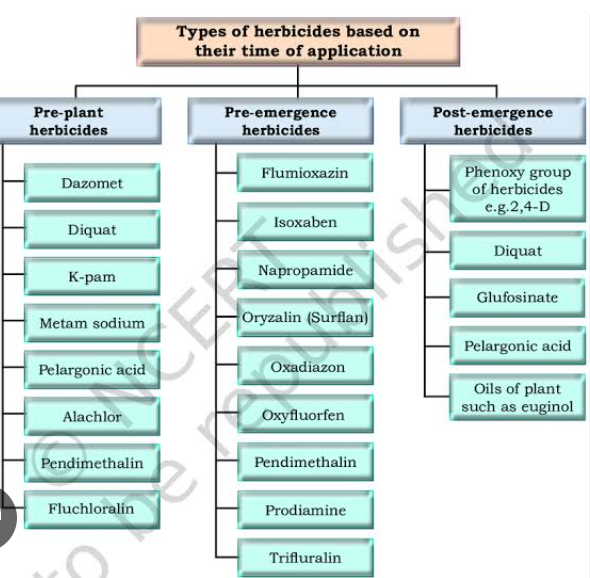
CLASSIFICATION BASED ON SELECTIVITY
There are two groups of herbicides based on selectivity. They are
I) SELECTIVE HERBICIDE : They are herbicides that will stun or kill certain plants when applied to a mixed vegetation. For example, Anthrazine when applied to a mixed maize and tomatoes farm, it will destroy the tomatoes while the maize will survive. 2-4-D will destroy broad leaf Weeds while narrow leaf grasses are left UNAFFECTED. Others include Primagram and prime train etc.
II) NON-SELECTIVE HERBICIDES: These herbicides will destroy all the weeds and plants they come in contact with. Examples are Paraquart, Metolachlor, Prometrine, Codal and Glyphosate etc.
CLASSIFICATION BASED ON MODEL OF HERBICIDE ACTION:
This classification is based on the mechanism by which the herbicide operate. These herbicides primarily on the site of action which include
I) Germination inhibitors. : They inhibited germination of weed seedlings. They are also called Mitotic inhibitors because they inhibited cell division. They stop the growth of roots and shoots.,inhibite the production of amylase and mobilizations of carbohydrate. They must be applied immediately after tillage operation before planting. Examples are alachlore, Metolachlor and Butylate etc.
II) Photosynthetic inhibitors: These herbicides inhibite photosynthetic processes in plants. Photosynthetic inhibitors are of two types. Herbicides that inhibite the liberation of oxygen from water taking by plants in hill reaction. Such herbicides include Triazine, urea, and Prometrine etc
III) Herbicides that inhibite regeneration of formulation of NADP in light reaction or photosynthesis and thus redox. They are mainly FOLIAL active herbicides. For example paraquart
IV) Respiratory inhibitors: They reduce the formation of ATP which transport energy required for respiration. Therefore, the plant is starved of carbon dioxide. For example, Bromoxynil and Dinoseb
V) Auxin-like herbicide : They interfere with hormone system in plants. They interfere with production, transportation and differential distribution of hormones in plants. For example, 2-4-D.
HERBICIDE CALIBRATION PROCEDURE
Examples. How to apply 5 litres of Duron to one hectare of land. (5 lit/hec). Using a sprayer with 20 litres capacity
Assuming: 25litres of water is required to be sprayed on 500 m2
Therefore,? Will be sprayed on 10,000m2 ( 1hec.)
?=25/500 *10000=500 litres of water is required.
5 litres of Duron requires 500litres of water.
Therefore, amount of Duron needed =
First convert the 5 litres to mls
1 litre = 1000mls
5 litres =?
=5*1000=5000mls
Therefore, amount of Duron needed on 1 hec =
20 *5000/500=100mls
. 100mls of Duron is needed.
